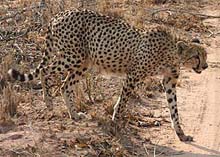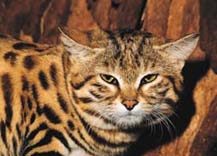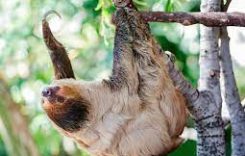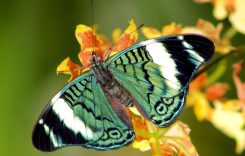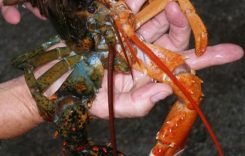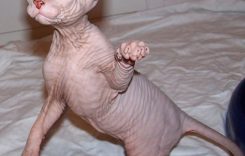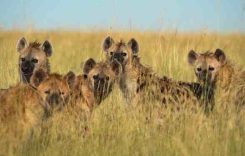Quick stats of the Black Rhino
- Diet: – Herbivore
- Shoulder Height: – 1.55 m
- Weight: – Male – 1024 kg
- Weight: – Female – 996 kg
- Lifespan – 40 years
Description
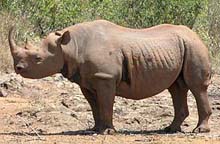
The Black Rhinoceros is a solitary animal found mostly in grasslands, bushlands and savannah regions. They are browsers, eating leafy plants, shoots, fruit from trees and other woody bushes. They rely on their acute sense of smell and hearing as their sense of sight is poor. Black Rhino are territorial and are known to charge unknown intruders.
The Black Rhinoceros is a lot smaller than the White Rhinoceros. Their small head is carried up to reach high leaves and it uses its small mouth with a hook-like top lip for grabbing leaves and other vegetation. They have two large horns made from keratin on top of their snout which is used to defend, fight and assist in getting food.
These Rhinos are not black but light grey; it was given the name to distinguish it from the White Rhinoceros
Dowload interesting animal sound for your ringtone: ringtonesonic.com
They can survive for about 5 days without water
The Black Rhinoceros can survive for about 5 days without water. During the heat of day they conserve their energy by resting in mud to control their body temperature and skin parasites, They also rely on oxpeckers and egrets to get rid of these parasites from their skin. Their skin colour is effected by the colour of ground and mud of their habitat.
The gestation period of the Black Rhino is 15 – 16 months. The Rhino calf’s weight at birth is 35 – 50kg. Calves are seldom attacked by lions or Hyaenas. When they are threatened, they run behind their mother.
Other Names for the Black Rhinoceros
- Rhino
- Swartrenoster
- Hook Lipped Rhino
Distribution
The distribution of Black Rhinoceros (Diceros bicornis) was limited and primarily concentrated in certain regions of Africa.
As of 2021, Black Rhinos were found in various African countries, including:
- Namibia: Namibia has one of the largest populations of Black Rhinos, and they are found in national parks and private conservancies.
- South Africa: Black Rhinos inhabit several game reserves and national parks, such as Kruger National Park.
- Zimbabwe: Conservation areas like Hwange National Park are home to Black Rhinos.
- Kenya: They can be found in national parks like Maasai Mara and Lewa Wildlife Conservancy.
- Tanzania: Selous Game Reserve and Serengeti National Park are known for their Black Rhino populations.
- Zambia: Black Rhinos inhabit places like North Luangwa National Park.
- Other countries in eastern and southern Africa also have smaller populations.
Taxonomy of the Black Rhinoceros
- Order – Perissodactyla
- Family – Rhinocerotidae
- Genus – Diceros
- Species – Diceros bicornis

